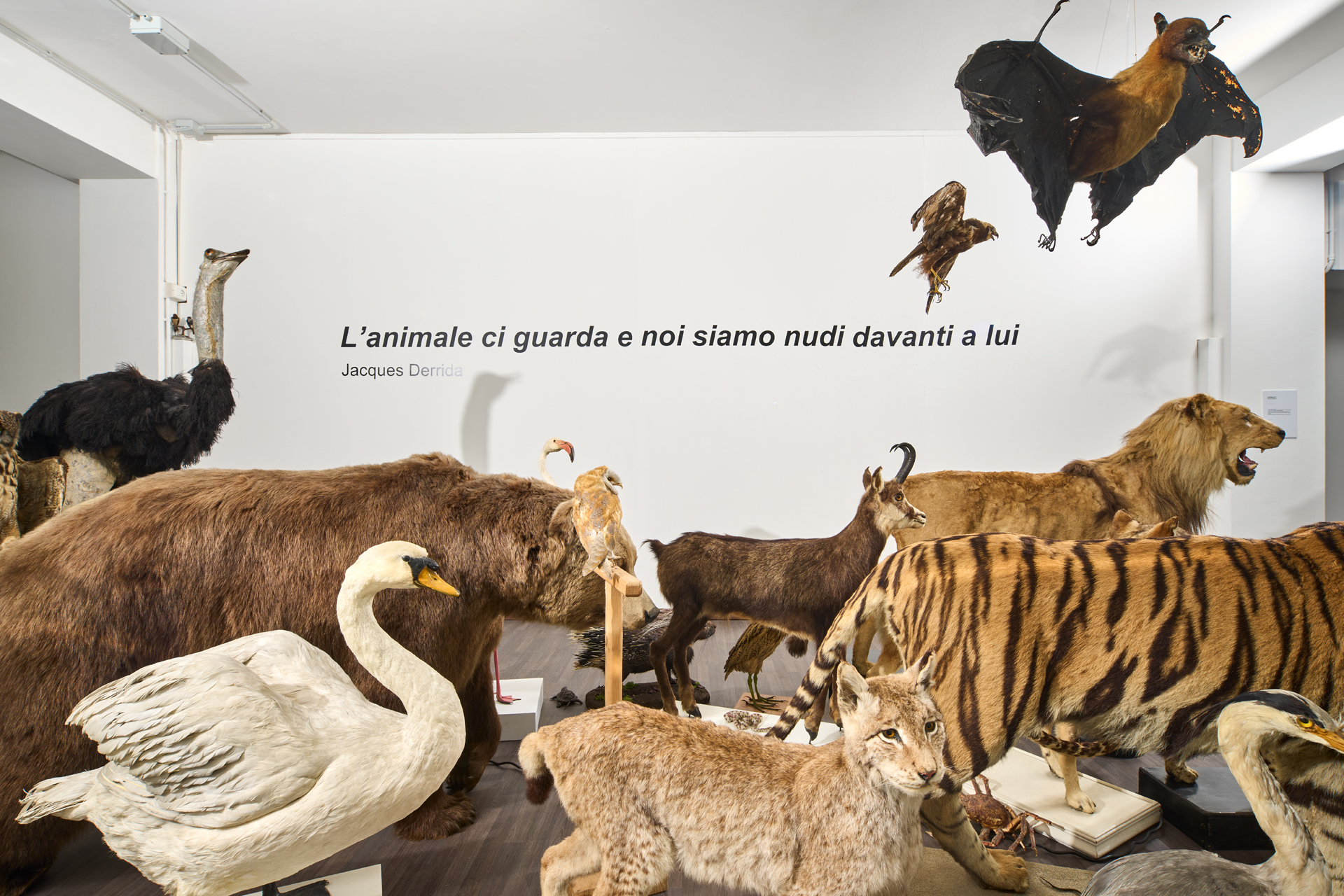The site-specific project draws inspiration from the extraordinary collection of taxidermied animals belonging to the museum’s collection. I wanted to radically alter the classical criteria of museography and archiving by creating a single installation within the Project Room, featuring over 90 animals from vastly different species—ranging from lions to beetles, wolves to butterflies, tigers to bats. It is a singular multitude taking a stand. The one who has always oppressed, exploited, and killed them, causing irreparable damage, is put on trial. This time, as Jacques Derrida wrote, “the animal looks at us, and we are naked before it.” The installation is designed for an individual viewing experience: each visitor sits in front of the animal tribe, near a tablet that projects their image (at the back of the room, the same footage is displayed in an enlarged form on a monitor). The spectator thus becomes the object of observation, and their portrait is scanned each time according to the perspective of the animals, who perceive reality differently from us. Dogs and cats, for example, are dichromatic, while birds can see ultraviolet light, and bees have a composite image of reality formed by an infinite number of elements. Through this action, a reversal occurs: the spectator steps out of their usual comfort zone, and the observer, in turn, is observed through a vision that is no longer univocal or partial. The installation generates responses: once seated, our face is transmitted onto a monitor and reinterpreted according to the multiple visual perceptions of the animals, producing different portraits each time. We are scrutinized by Nature, which watches and judges us in an artwork that unsettles and disturbs. This is a political work in which the animals represent the oppressed, whose investigative gaze urges us to reflect on our actions and our arrogance.
